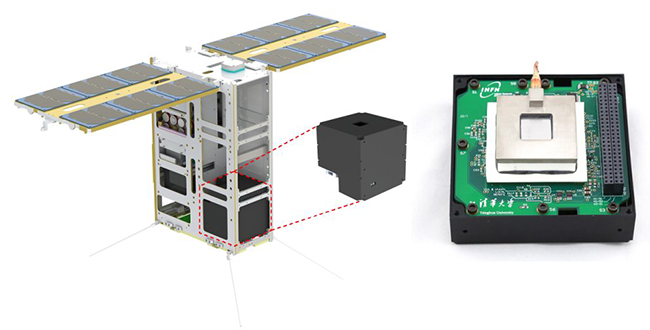The CubeSat X-ray polarimeter led by Tsinghua University detects first light events
High-sensitivity X-ray polarimetry is a window not yet opened in astronomy due to technical difficulties. PolarLight, with a miniature X-ray polarimeter onboard a CubeSat, is a space program to test a novel technique for X-ray polarimetry. The CubeSat was launched into orbit on October 29, 2018. On December 18, the detector was powered on for in-orbit test, and detected the first events triggered by cosmic X-rays and charged particles. This is the first time that such a new technique for X-ray polarimetry is demonstrated in space, implying that a new window in X-ray astronomy can be opened in the future. Currently, more tests and observations are being carried out with PolarLight.
X-rays are electromagnetic waves with very short wavelengths. Cosmic X-rays cannot be observed on the ground because of the absorption of the Earth atmosphere. Until 1962, X-ray astronomy was born with a rocket flight. As X-ray polarization can help address important astrophysical questions, only 6 years after that, astronomers in the US started efforts in detecting X-ray polarization from celestial objects. In 1971, an experiment onboard a sounding rocket opened a ray of hope. In 1975, with a polarimeter on the OSO-8 satellite, they eventually measured the X-ray polarization from the Crab nebula at a high significance. However, due to the low sensitivity of the detector, there is no positive detection from any other sources. In 2001, high-sensitivity X-ray polarimetry was first demonstrated possible in the INFN-Pisa lab using a new technique, based on which comes with the PolarLight proposal. The PolarLight concept aims for an in-orbit test of the new technique, to demonstrate and increase the technical readiness of the detector needed for future large missions, such as the enhanced X-ray Timing and Polarimetry (eXTP).
The PolarLight project is a collaboration including the Tsinghua University, IHEP, INFN-Pisa, Ningbo University of Technology, the North Night Vision Technology, IAPS, and SpaceTY.

Figure 1. The PolarLight detector and the CubeSat.
(From Department of Engineering Physics)

